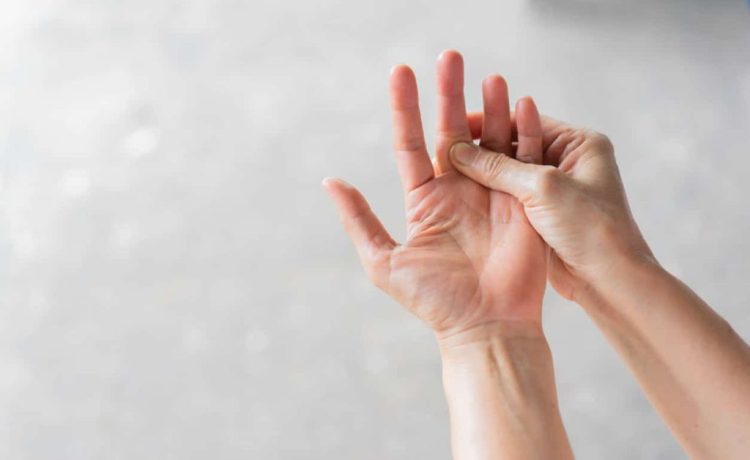Imagine a situation where you are in the gym doing your favorite workout, and all of a sudden, you feel a sharp pain in your hand. You have probably broken a knuckle. But what does a fractured knuckle look like, and how to treat it? No need to worry! In this guide, we’ll provide you with all the information you need to identify this condition and address it effectively.
Let’s start by exploring symptoms and causes of a broken knuckle.
How to Recognize Broken Knuckle Symptoms?
The most common symptoms of broken knuckle on hand include:
- Pain,
- Swelling,
- Bruising.
These symptoms will occur immediately and can worsen if left untreated. Moreover, since your hand is injured, that will disrupt your daily life and further workouts. You will probably have a limited range of motion and feel severe pain when trying to move the finger.
Another potential symptom of a broken knuckle is numbness or tingling in the affected area. If you experience these symptoms, it’s crucial to seek medical attention immediately.
Broken Knuckle Causes
The most common cause of broken knuckles is direct trauma to the hand, like a punch or a fall. Individuals who participate in contact sports are particularly susceptible to this type of injury.
Another cause is repetitive stress on the hand. Constant gripping when climbing or weightlifting for example, can contribute to a broken knuckle.
Lastly, for some people, health conditions can also be a cause. Osteoporosis and arthitis can weaken the bones and increase the risk of fractures.

Effective Treatment
If you are wondering how to treat a broken knuckle, read on to find out! The first step is to immobilize the hand to prevent further injury. It would be wise to take over-the-counter pain relievers to reduce pain and reduce swelling. Ice can also help to reduce sweeling and promote healing.
In some severe cases, a broken knuckle injury will require medical attention. For example, if you have a dislocation, the doctor will need to do a reduction procedure to realign the bones. Recovery will include physical therapy to restore flexibility and strength to the hand.
Different Types of Knuckle Injuries
Let’s go over different types of knuckle injuries:
- Fractured knuckle (includes a rupture in the bone)
- Dislocated knuckle (refers to the displacement of the bone from its usual/normal position)
- Bruised knuckle (involves damage to the soft tissue around the bone without a fracture, usually heals with rest and ice therapy)
- Boxer’s fracture (affects the fourth and fifth knuckles in particular, very common in contact sports)
Prevention
There are a couple of ways to prevent broken knuckles from happening:
- Proper technique – for athletes who rely heavily on their hands, it’s crucial to learn and practice correct form when lifting weights
- Wear protective gear – Gloves or wraps will provide additional support for your hands. This is especially important in contact sports.
- Regular strength exercises – This type of workout will help you build resilience in your hands and reduce the chance of broken knuckles occurring.
Nutrition Plays a Key Role
Nutrition is very important for the prevention of fractures and for maintaining strong bones. We all know there’s nothing better for your bone health than calcium and vitamin D. Increase your intake of these nutrients by adding leafy greens, dairy products, and fortified foods to your diet.
Protein is also important for bone health. It supports bone repair and regeneration. Fish, legumes, and lean meats are loaded with protein.
Lastly, hydration is often overlooked, yet extremely important for effective healing and overall health. Drink plenty of water every day!
Monitor Recovery
In order to return to normal activity and your workouts ASAP, it’s crucial to monitor your recovery. Physical therapy will help you restore the full movement of your finger and hand. Also, follow-up appointments with your doctor are of utmost importance. The doctor is the only one who can tell you if you need to change your treatment if needed.
Lastly, listen to your body. If you feel pain or discomfort after a long period of time, it’s essential to tell your doctor. This way, you will ensure the prevention of further complications and smoother recovery.
Final Thoughts
If you are experiencing a broken knuckle injury, remember that recovery takes time. It’s crucial to be proactive with your treatment and commit to physical therapy. Here’s to a fast recovery and a seamless return to your workouts!





